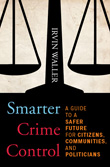How can we honor the hope expressed by Michael Brown Sr. that the death of his son Michael in Ferguson, Mo., last summer will ¨lead to incredible change, positive change, change that makes the St. Louis region better for everyone?”
St Louis has such high losses of life from homicide that, on a per capita basis, it is one of four U.S. cities in the list of the 50 most violent cities in the world and it is rising in this embarrassing list. But this is not inevitable, it is preventable but it will require politicians to use Smarter Crime Control to apply science to save lives and by the way save billions of tax dollars.
Unfortunately the informed debaters such as the recent New York Times Debate about public safety still do not talk about effective violence prevention. They ignore the US science on effective and cost effective violence prevention, which show that we already know how to prevent violence and it is not by tinkering with police powers or overuse of incarceration.
By the standards of other affluent democracies like Canada, England or Germany, the US is and indeed was always a heavy incarcerator, particularly of blacks. In the last 30 years, it took its punitive incarceration rates from the 1950´s and 1960´s to levels unknown on this planet in the democratic world.
But this spending spree on incarceration is not free. US taxpayers who do not believe in big government spend a whopping $83 billion for its 2.2 million inmates, which account for about 20% of the world´s incarcerated population. If the US incarcerated at the German rate, it would save annually more than $70 billion in taxes. (Germany has an incarceration rate of 76 per 100,000 and the US has 716 per 100,000).
Various erudite organizations have assessed the contribution of this massive experiment to public safety in the US. While the claims vary, few suggest a contribution in reduced violence of more than 25%. But this is not enough as the US still allows its homicide rates to be a multiple of 2 to 3 times those of other affluent democracies.
The debaters continually refer to the disturbing disparity in rates of incarceration for Blacks versus Whites – the rate for blacks is about 6 times the rate for whites. But the debate rarely refers to the equally disturbing disparity in rates of homicide for young men where the black rate is close to 13 times that of whites.
The debaters overlook the stunning reality that the US has compelling – but little used – science on what is effective violence prevention. Likely the US has more science than the rest of the world put together on what is effective and what is cost effective at preventing violence.
Such scientific solutions are easily accessible. They are covered for instance on public web sites such as that of the Centers for Disease Control and Prevention and the World Health Organization—both of which consider endemic violence as much of a public health challenge as a criminal justice one.
But, one of the most useful sites is produced by the U.S. Department of Justice (DOJ), aptly named crimesolutions.gov. This was built on research results accumulated in the last 50 years in the U.S. and other countries, ranging from pre-crime prevention actions such as pre-school programs to criminal justice programs focusing on re-entry.
Many of the research studies cited involved random control trials that tested whether a particular innovative program reduced crime more than the traditional system such as reactive policing and court sentencing to incarceration. A program is rated ¨effective¨ only if there are enough reliable scientific studies to demonstrate it.
The DOJ site currently confirms the effectiveness in preventing crime of 78 out of 327 programs and eight of a new category of 27 practices. Most of the “effective” programs concern some type of pre-crime prevention rather than an action of the police, the courts or a corrections system. More than half of the 78 successful programs tackle problems in families, or schools, or concern themselves with improving life skills through mentoring, substance abuse or trauma treatment programs.
For example, using tax revenue to invest in smart crime control and violence prevention would cut those rates of violence, particularly affecting young black men, by as much as 50%, while reducing the need for so many police, and for the current high levels of incarceration.
One reason for the lack of implementation of this 21st century knowledge is that it had not been articulated for legislators. So I have produced a guide to Smarter Crime Control for politicians on this knowledge and how it could be applied.
This book includes the compelling public safety and fiscal arguments to be made for shifting from a failing and expensive punishment agenda to a proven and cost-effective prevention agenda. There is a role for policing that involves problem-solving, and in partnership with services to families and schools, as opposed to an over-reliance on siloed reactive policing and incarceration. But the main shift must be from incarceration to pre-crime prevention.
Such an approach would provide huge savings to taxpayers. But it also means better futures for young men at risk, including those of color. It’s not a coincidence that the co-chair of the task force on policing recently announced by President Barack Obama is former Assistant Attorney General Laurie Robinson, who played a key role in launching crimesolutions.gov. (The other chair is Philadelphia Police Commissioner Charles Ramsey.)
If we truly want to provide a positive answer to the challenge posed by Michael Brown Sr, we know what to do. It’s well past time for politicians to do what is smarter crime control.
This blog coincides with a longer viewpoint published by The Crime Report in 2014.

